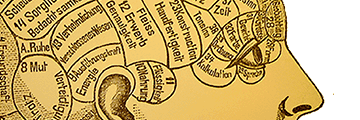The Sorrows of an American
Full Title: The Sorrows of an American: A Novel
Author / Editor: Siri Hustvedt
Publisher: Picador, 2008
Review © Metapsychology Vol. 13, No. 30
Reviewer: Ralph Harrington, Ph.D.
The Sorrows of an American is a beautiful, moving, finely crafted and deeply involving book. It is concerned with the uncovering of hidden things, in individual and collective histories. Throughout, revelations of secrets in the lives of individuals, and how those revelations are dealt with, echo similar processes in wider social histories of families, communities and nations, across time and space.
Dr Erik Davidsen is a New York psychiatrist, the grandson of Scandinavian immigrants to America. As the book opens, we learn that his father, an academic and veteran of the Second World War in the Pacific, has died. While sorting through his papers, Erik and his sister Inga find a letter that hints of a dark secret that has remained hidden for more than forty years. The story that follows is partly the detective story that leads to the final uncovering of that secret (and rather flat and disappointing it turns out to be, but the novel’s many merits make up for the anticlimax). However, that quest is only the occasion for a more complex and more far-reaching search for truth within Dr Davidsen’s own life, one that encompasses the whole of his family and extends both backward and forward in time.
Dr Davidsen is a lonely man, divorced and living alone in his Brooklyn home. He lets the ground floor flat to Miranda, a young single mother with a little girl called Eglantine, Eggy for short. Davidsen is attracted to Miranda, and that process of attraction is beautifully described, in all its awkwardnesses and sudden beauties, in Hustvedt’s limpid prose. That attraction is complicated, however, by the presence of Lane, Miranda’s ex-partner and Eglantine’s father, whose unpredictability, egoism and eccentricity approach dangerously psychotic levels. Erik’s sister Inga, meanwhile, is the widow of Max, a famous and charismatic writer, and has a troubled teenage daughter called Sonia. All have their unspoken secrets, burdens they do not seem able to release, just as the Davidsens’ family history is bound up beneath the weight of fears, hopes and dreams that have never found resolution, from the financial failures of the Depression to the terrors of nocturnal bombardment on the beaches of a war-ravaged Pacific island.
Hustvedt’s narrative is fragmented, moving back and forth between Dr Davidsen’s own accounts of the developing dramas of his life, his encounters with his parents and remembered episodes from his childhood, interspersed with episodes from his father’s war diaries. These latter passages constitute the most powerful, effective and convincing parts of the book, and the ‘acknowledgements’ at the end of the book make it clear why. These various elements are kept together, and given a narrative drive, with masterly control and through prose of great beauty and deceptive simplicity.
The characters are finely-worked and believable. Lane alone stands out as a not entirely convincing creation. He is too extreme, too brightly colored, perhaps too consciously crafted to fit his role in the book. A more subtle characterization might have been more effective. Perhaps because of his caricatured quality the final resolution of his various psychoses and of his relationship with Miranda and her family is rather perfunctory and uninvolving. He is the exception, however: the Davidsen family is a wholly convincing creation that increasingly draws the reader in as the narrative progresses, until at the end of the book you are sorry to be leaving them. There is some enjoyable and deftly-handled humor, while some of the episodes of pain and grief are almost too real. This is a book capable of bringing tears to your eyes.
© 2009 Ralph Harrington
Ralph Harrington, Ph.D. is a historian who has researched, lectured and published on medical history and the history of trauma, among other topics. His web site is at http://www.greycat.org
Keywords: novel

